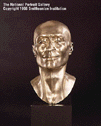

Modern Dance
Traditionally, European and American theatrical dance centered on ballet. However, in the early twentieth century, it became fashionable in dance circles to rebel against the strictures of tradition. The first two well-known American dancers to break away from classical ballet were Isadora Duncan and Ruth St. Denis. Although their styles differed, Duncan and St. Denis's unconventional approaches opened the door to a new era in dance history: the American modern dance movement of the 1920s. Leaders of this movement, some of whom are listed below, based their works on personal experience, using their bodies as instruments to express such emotions as passion, fear, joy, or grief. Rather than adhering to a set form and a limited range of gestures, as in ballet, the dancer created form as an outgrowth of his or her own communicative impulses.
Over time, modern dance has reconciled itself to other traditional dance forms. Perhaps nothing has helped to integrate various styles of dance more than American musical comedy, which draws on ballet, modern, tap, and ethnic folk dancing. In addition, with the advent of television and improved transportation after World War II, audiences and dancers alike have benefited from a greater exposure to dance styles from all over the world. Dancers today use a broader range of techniques, styles, and source materials than ever before.
 Paul
Meltsner (1905-1966)
Paul
Meltsner (1905-1966)
Oil on canvas, circa 1940, T/NPG.73.41
National Portrait Gallery,
Smithsonian Institution, Washington, D.C.
Martha Graham was one of the leading dancers and choreographers of the American modern dance movement. In 1916 she began her training at the Denishawn School in Los Angeles, under the tutelage of Ruth St. Denis and Ted Shawn. There, Graham learned to discard the strict forms and gestures that had traditionally governed choreography. By the time of her New York debut in 1926, she had developed a style that was both revolutionary and controversial. Graham intended her dances to provide insight into the human condition, as in Letter to the World (1940), inspired by Emily Dickinson's life and poetry, or Appalachian Spring (1944), a celebration of America's pioneer spirit. While early modern dance did not use characters or tell stories, Graham had a theatrical bent that surfaced increasingly in her later works. Her modern-dance ballets, beginning with Clytemnestra in 1958, used the free-form techniques of modern dance to present classical literary works. Included in Graham's legacy are several monumental dance scores written for her by composers such as Samuel Barber, Paul Hindemith, and Aaron Copland.
 Philip Grausman (born
1935)
Philip Grausman (born
1935)
Bronze, 1969, NPG.75.31
National Portrait Gallery,
Smithsonian Institution, Washington, D.C.
Gift of an anonymous donor
By World War II, American dance had evolved in several directions. However, the spirit of the early modern dance pioneers lived on in the work of José Limón, whom many consider the greatest performer in the history of modern dance. Limón was born in Mexico, in the state of Sinaloa. His family, displaced by the Mexican Revolution, moved to the United States when he was seven years old. As a young man, Limón enrolled in art school in New York but later dropped out, complaining that he was not free to develop his own style. After going to a dance concert with some friends, Limón felt that he had finally found his calling, and he immediately began to study dance with Charles Weidman and Doris Humphrey. From 1930 to 1940, Limón danced with their company in concert works and Broadway shows, beginning with Irving Berlin's As Thousands Cheer in 1932. During those years he also began to choreograph his own works. Many of Limón's dances, such as Danzas Mexicanas (1939), had Mexican or Spanish themes. After serving in World War II, Limón formed his own company and enjoyed great success both in the United States and abroad. Today he is remembered for his commanding stage presence and for the seemingly effortless use of his body to communicate subtle ideas and emotions.
 Boris
Chaliapin (1904-1979)
Boris
Chaliapin (1904-1979)
Sanguine and charcoal on illustration board, 1962, T/NPG.89.75
National Portrait Gallery,
Smithsonian Institution, Washington, D.C.
Gift of Mrs. Boris Chaliapin and Irina Chaliapin Murphy, 1989
Katherine Dunham pioneered the use of folk and ethnic dance as a basis for modern theatrical compositions. She built her distinguished career as both a dancer and choreographer, and on her academic research into the role of dance in African, Caribbean, and African American societies. Dunham pursued her interest in the origins of black dance at the University of Chicago where she earned a Ph.D. in anthropology. In 1935 she received her first grant to study ethnic dance in Jamaica, Martinique, Trinidad, and Haiti. She especially loved Haiti and returned there many times. Participation in the depression-era Federal Theatre Project in Chicago offered Dunham an invaluable opportunity to experiment with her own folk ballets, such as L'Ag'Ya (1938), a dramatized version of a fighting dance from Martinique. Her company's New York debut in 1940 was an unqualified success, and her compositions were recognized as the first uniquely African American concert dance. Thereafter, Dunham enjoyed a long and varied career, choreographing and starring in numerous concert, theater, and film works. In 1965-66 she served as the technical cultural adviser for the First World Festival of Negro Arts in Senegal. Upon her return, she settled in East St. Louis, where she founded a combined cultural center, anthropological museum, and dance studio. The center offered local residents a curriculum of dance, psychology, anthropology, and languages. Dunham's legacy, however, is greater than any one neighborhood or culture. In her own words, "I would feel I'd failed miserably if I were doing dance confined to race, color, or creed. I don't think that would be art, which has to do with universal truths."
LINKS
General
Martha Graham
José Limón
Katherine Dunham